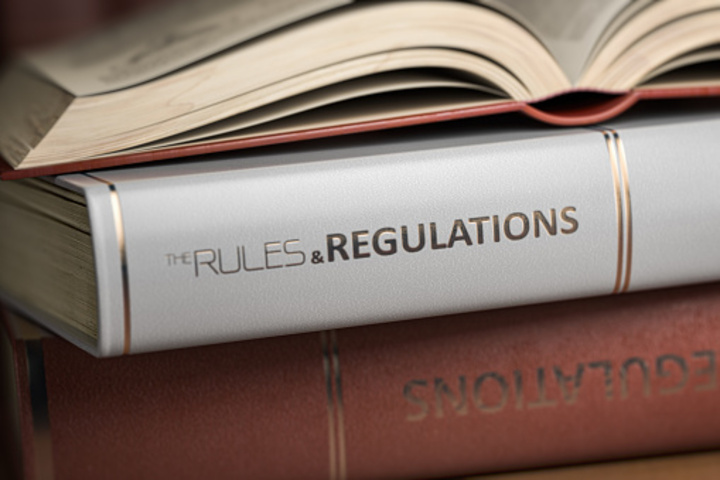Karl Dines, the Consumer Duty guru, says while 31 July is not long off there is no reason to panic. Here he shares seven reasons to keep calm and do your Duty...
According to the latest Schroders Adviser Pules survey, 19% of advisers say they are fully prepared for the Consumer Duty, 77% say that their preparations are in progress and expect to be ready, and 4% say that they have not yet started to prepare.
That survey was conducted in May 2023 - as I am writing this, it is mid-June, the sun is shining, and we have a deadline of 31 July. I would imagine most advisers will be confident in fully complying with the Consumer Duty.
However, if not, don't panic - in this article, we hope to give guidance on life, the universe, and the Consumer Duty in seven takeaways.

1. Get a plan and stick to it: Failing to prepare is preparing to fail, as the saying goes. With something as large as the Consumer Duty it would be wise to have a plan in place, with key objectives, deadlines, and responsibilities. Secondly, there is the sticking to it part; with a deadline so close, make sure commitments are met and deadlines achieved.

2. Follow the leader: There has been great guidance on Consumer Duty from the regulator through FG22/5, but also via their really useful podcasts. The podcasts have been an excellent way to communicate not only facts, but also the sentiment of the Consumer Duty and will help you develop a clear framework of the key areas to explore.
At SimplyBiz, the framework we use when working with advisers is organised into six key strategies, each of which addresses specific areas of the Consumer Duty. The first strategy deals with the high-level requirements around Principle 12 and the cross-cutting rules. The next four strategies deal with the four outcomes, and the final strategy focuses on monitoring and governance.
|
Strategy |
Consumer Duty area |
|
Education and culture |
The consumer principle and cross cutting rules |
|
Distribution |
Products and services outcome |
|
Value assessment |
Price and value outcome |
|
Communication |
Consumer understanding outcome |
|
Customer services |
Consumer support outcome |
|
Monitoring and governance |
Monitoring, reviewing and responsibility |
The six key strategies are further subdivided into the following:
|
Consumer Duty requirements |
Explains what the regulator wants |
|
Meeting the consumer duty requirements |
Explains how the firm will do it |
|
Additional collateral |
Additional information or references |
As everything within the Consumer Duty, it's not difficult, there's just a lot of it. And, of course, one area which flows through the whole of the Consumer Duty is the fair treatment of vulnerable clients, so ensure there is a robust process in place to manage this element.

3. Proportionality and reasonableness: The regulator expects firms to produce and regularly review management information (MI) on consumer outcomes, with the MI appropriate to:
- The nature, scale, and complexity of the business.
- The size of the firm.
- The services offered.
- The consumer base served.
This is worth bearing in mind when you create your MI plan, to make sure the reporting is appropriate to your business.

4. Show, not tell: Get it documented, the expectation being that a firm is able to demonstrate that they have procedures in place to meet the four outcomes. That is why it will be better if firms over-engineer and state the obvious, with a fully documented approach.
As an example, under the Products and Services Outcome, firms are expected to check that manufacturers also follow the Consumer Duty, especially value assessments and target market assessments. If asked, it's easy to state that yes, checks have been made but what is more powerful is having an up-to-date schedule on what you have checked, when checks were made, and where to locate the source information from the manufacturer.

5. Build your library: The last subdivision when looking at the strategies is to support your consumer with additional collateral, be that paper, electronic, or software. Gather your collateral into an indexed library so it's easy to manage and locate MI.

6. Build a review procedure: The regulator expects a firm to be able to demonstrate how business models, actions taken, and culture, is focused on good consumer outcomes. The rules, therefore, require a firm to:
- Monitor and regularly review the outcomes experienced to ensure that services provided are delivering outcomes consistent with the Consumer Duty.
- Identify where customers or groups of customers are not getting good outcomes and understand why.
- Have processes in place to adapt and change to address any risks or issues identified and stop it occurring again in the future.
Building a robust review procedure will cover this point.

7. Think about the future: The Consumer Duty journey has been all-consuming, and will continue to be well into the future, as things develop. It is an expectation that reviews are undertaken annually so spend time ensuring that there is a robust review procedure in place.
So, there are seven takeaways which should provide guidance wherever you are on your Consumer Duty journey. This isn't a case of ‘So long, and thanks for all the fish' - the Consumer Duty is here to stay, and it has the potential to become the barometer from which future actions and decisions are made.
Karl Dines is head of business consultancy at SimplyBiz










